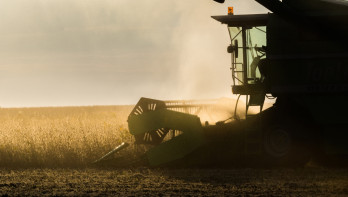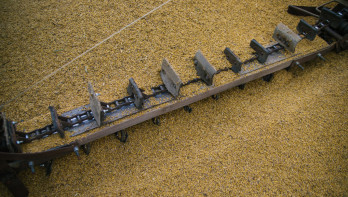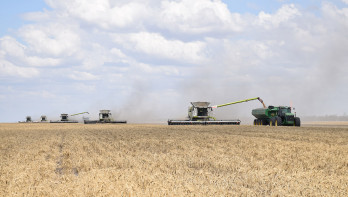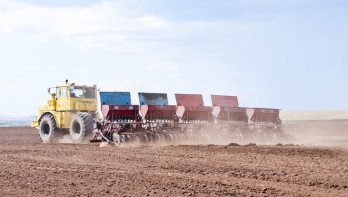Analysis Grains
One grain crop is doing well in Germany
The wet growing season has left its mark on European grain growers. However, not all grains disappoint in Germany. DRV expects a relatively large corn harvest. Measures against Russia are back on the agenda in Brussels. After earlier this year the import duty on grains was increased, the European Commission is now targeting agriculture-related products.
The December contract for wheat on the Matif closed €2.25 lower at €221.50 per ton. On the CboT, grains closed in the positive during the last trading session. Wheat closed 0.5% higher at $5.81½ per bushel. Corn performed slightly better with a 0.6% increase to $4.21½ per bushel. Soybeans, however, decreased by 0.1% to $9.96¼ per bushel.
The Deutscher Raiffeisenverband (DRV) estimates the total German grain harvest at 39.1 million tons. This is the smallest harvest since 2018. Just under half of that, namely 18.6 million tons, is wheat, and German growers have harvested 10.7 million tons of barley. The reason for the disappointing harvest is the very wet course of the growing season. It's not all doom and gloom for German arable farmers. Corn has performed relatively well this season. With a harvest of 4.9 million tons, Germany harvested 9% more corn than last year, marking the country's largest corn harvest in five years. "In regions where it was not possible to sow all winter wheat, growers switched to corn," writes Guido Seedler, DRV's grain specialist in the explanation of the figures. As a result, the corn acreage has increased. Due to sufficient moisture during the growing season, the yield is also relatively good according to DRV.
Sanctions
While the Kremlin may be pushing for its own grain exchange to make the market more transparent and fairer, the European Union is considering increasing tariffs on agricultural products. Russia and Belarus still export agricultural products to the EU. Food and groceries are exempt from Western sanctions. Earlier this year, a duty was imposed on wheat from Russia, and several member states want to expand this. The export of agriculture-related products is an important source of income for the Kremlin. Some sources indicate that the EU is considering imposing an import duty on fertilizers as well. This idea is welcomed by the European fertilizer industry, which has long been advocating for better market protection against what they see as unfair competition. Not everyone in Europe is entirely positive about this, as more expensive fertilizers increase the cost of food production.
Ukraine maintains high export pace
Ukraine is doing well in terms of grain exports. According to the Ukrainian Ministry of Agriculture, 13 million tons of grain have already been exported this season. This is 60% more than last season when the figure stood at 8.3 million tons around this time. Wheat exports, in particular, are doing well. With 7.3 million tons, they are 77% ahead of last season.
The start of the new growing season in Ukraine is less promising. In the second decade of October (10 to 20 October), the growth conditions for root formation and initial growth in winter cereals were generally favorable, according to the Ukrainian APK-Inform. Due to late sowing and slow germination, the crops are not very developed yet. This makes the wheat susceptible to winterkill. According to the Ukrainian Ministry of Agriculture, as of October 21, 4.33 million hectares of winter cereals have been sown. This is 84% of the planned area.
Argentina from a hopeless position
In Argentina, the weather has changed this week, making a big difference in the agricultural sector. At least that's what the Rosario grain exchange says. The season seemed lost for corn and wheat growers, according to the exchange. "We were 3-0 down due to the drought," writes Cristian Russo, head of agricultural forecasting at the Rosario grain exchange. "With last week's rain, we got to 3-2, and with what is falling now, the deficit has turned into a lead of 4-3." The rainfall came just in time for the wheat that is ripening and for the corn that still needs to be sown in a significant part.




